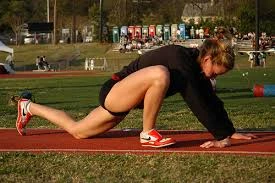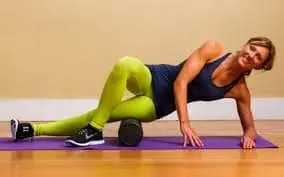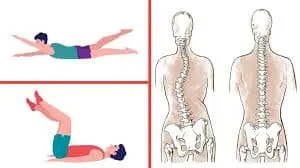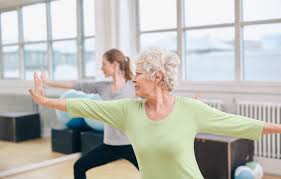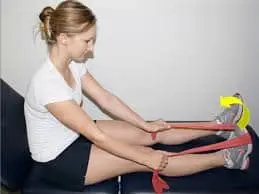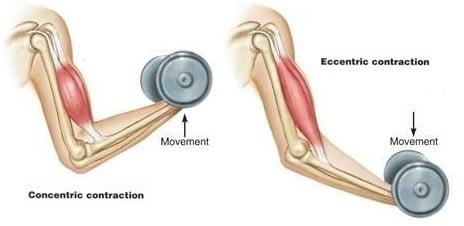Dynamic Stretching
Introduction
People move more slowly during dynamic stretches than they do during normal exercise. It’s normal practice to warm up muscles and get them ready for activities using dynamic stretches. Over the past several years, dynamic stretching has become more popular than other types of stretching.
The possible benefits of dynamic stretching as well as its distinctions from static stretching will be discussed in this article.
Draw on both dynamic and structural stretches to mimic the actions of the sport or activity you wish to engage in. A swimmer can circle their arms, for example, before entering the water.
A sequence of dynamic stretches may be performed on the body before starting any activity.
Examples
- trunk twists
- Leg swings against a wall
- walking lunges
- Arm swings
Benefits of dynamic stretching
According to certain research in the review, static warm-ups may have negative effects on muscular strength, even if the data suggested that both dynamic and static stretches might increase the range of motion.
A more recent analysis of Dynamic stretching has shown that it enhances muscular strength and range of motion, according to a reliable source.
Improve performance by warming up your muscles.
As everyone knows, we must warm up before starting any activity, particularly if it’s a strenuous session like strength training. This is best done using dynamic stretching.
Increase joint ROM and muscle strength.
It enhances the range of motion and flexibility while also reducing stiffness.
Better mobility is a significant victory, regardless of your level of experience or exercise experience.
Dynamic stretching can be very good in the intention of maximizing joint and muscle stretch, but there may be something inherent in that. The range of mobility of a joint is the sole thing that these expressions convey.
With frequent and thorough practice, it can lead to a greater range of motion, which will help you get even more out of your workouts.
Help in preventing injury and recovery.
Performing some active stretches while you warm up will significantly reduce your chance of injury.
When is dynamic stretching appropriate to use?
Dynamic stretches can be performed prior to the start of any workout routine.
Before Sports or Athletics: For athletes who depend on rapid bursts of speed and leaping ability, such as basketball players, soccer players, and sprinters, dynamic stretching can be quite beneficial. It aids in muscle warming and primes the body for powerful motions.
Prior to Weight Training: Research indicates that dynamic stretching, as opposed to static stretching or avoiding stretching entirely, might improve performance when lifting weights, especially for exercises requiring leg power, such as leg extensions.
Before heart-related activity, Dynamic activities help warm up your muscles for running, boot camp, or swimming, which may enhance performance and lower your chance of injury.
How does dynamic stretching work?
When performing dynamic stretching, you move your body. The body will be moving rather than remaining still.
Stretching dynamically before exercising can benefit your body. It causes a boosted heartbeat, temperature, and blood flow in the muscles. As a result, your body feels more alert, aware, and prepared.
Stretching: Dynamic versus Static
Static and dynamic stretches are not the same thing.
Dynamic stretches are designed to follow the body’s natural range of motion. For several seconds, the strain is maintained. A specific movement-based dynamic stretch is the torso-twisting lunge.
Static stretches involve prolonged muscular holding.
Examples of Dynamic Stretching Exercises
Leg Swings: Stand upright and lift one leg. If you require support, use a wall or a large piece of furniture.
Make a gentle pendulum-like swing with the leg. Keep your knees straight or bent.
Repeat on the other leg.
On each side, perform 20 repetitions.
Arm Circles: Begin by making tiny circles with your hands out to the ends. To release tension in your shoulders and upper arms, slowly expand the circles. Do activities like swimming and throwing sports.
To achieve high knees, steadily raise one leg toward the chest while keeping your body straight.
Repeat with the other knee when you’ve returned to your starting posture.
As your body heats up, keep switching knees, accelerating the pace.
Do 20 repetitions on both sides.
Walking Lunges: Take a single-leg forward step while standing, being careful not to allow the knee to go beyond the ankle.
Return to standing by taking a step forward, then do the same with the other leg. Repeat 5 times
To do torso twists, carefully spin your upper body side to side while keeping your feet hip-width apart.
Buttocks kick: Stand straight and thrust your heels up towards your glutes. This will loosen your quadriceps and get your legs ready for sprinting or leaping activities.
Common Mistakes to Avoid in Dynamic Stretching
Dynamic stretching is an efficient approach to prepare your body for exercise, but only when done correctly.
Excessive or forceful stretching
It needs to be regulated, slow, and fluid. Joint injury and muscle strains may arise from moving too quickly or pushing your body into a stretch. Rather, focus on fluid, gradual movements that correspond to your available activity.
Not Performing a Gentle Warm-Up Before Dynamic Stretching
You run a higher risk of injury if you go straight into aggressive stretches without warming up. Stretch after warming up your body.
Stretches Not Adapted to Your Activity
Your warm-up may be unsuccessful if you use unnecessary stretches that have nothing to do with your training or activities. Target the muscles and movements you will do most of the time. This aids in the correct preparation of your body.
Ignore discomfort or pain.
Stretching shouldn’t cause pain. If you feel severe pain or discomfort, stop right away. Pain could mean you’re overextending or that you have an injury.
FAQs
How does one define dynamic exercise?
The term “dynamic exercise” refers to muscle work that is rhythmic and causes movement.
What drawback does dynamic stretching have?
The stretches can be easily overdone or pushed too hard, or too quickly.
What are the benefits of dynamic stretching?
It enhances your pre-workout mobility and flexibility and provides long-term benefits by improving muscle function and lowering the risk of injury.
Which dynamic exercise is the best example?
Hip Circles
Arm Circles
Arm Swings
High-Stepping
Heel-to-Toe Walk
Lunges with a Twist
Step Up and Over
References
Cpt, S. C. (2023, September 18). What is dynamic stretching, and how to do it. https://www.medicalnewstoday.com/articles/dynamic-stretching#summary
Chertoff, J. (2019, May 23). The benefits of dynamic stretching and how to get started. Healthline. https://www.healthline.com/health/exercise-fitness/dynamic-stretching
Clinic, C. (2025, April 22). Dynamic vs. Static Stretching: Is One Better? Cleveland Clinic. https://health.clevelandclinic.org/dynamic-stretching-vs-static-stretching
Five dynamic stretches for a quick Full-Body Warm-Up. (n.d.). Hingehealth. https://www.hingehealth.com/resources/articles/dynamic-stretches/
Bsn, T. A., RN. (2023, November 27). What is Dynamic Stretching? Here’s 6 Dynamic Stretches to Boost Energy. BrainMD Blog. https://brainmd.com/blog/what-is-dynamic-stretching/?srsltid=AfmBOorFiiM3Sn6oh_vpR_4y7YLHGVOIIx1PytBN6fLhbCkKKrN6YH5P
Dynamic Stretching: What it is, Benefits & examples. (n.d.). Sweat. https://sweat.com/blogs/fitness/dynamic-stretching

